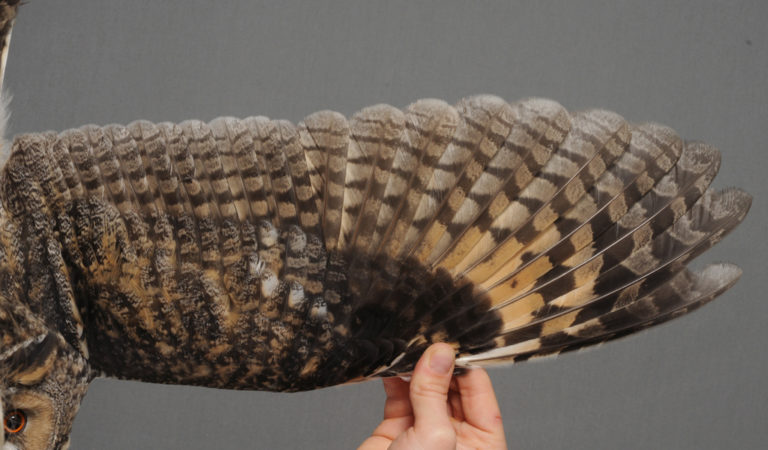

Long-eared Owl
AGE – BEST CRITERIA:
In 1cy, all SS are uniformly juvenile, and show juvenile type barring. Older age classes show (most or all) SS with adult type barring, and in c. 35% of the birds at Ottenby, two different generations of SS are present. Two to four age categories are discernable, depending on the extent of the post-breeding moult of the individual.
1cy:
2cy+:
2cy:
3cy+:

2cy+ November (male). SS are uniformly post-breeding, showing no moult contrast (if a moult contrast is present, the age may be able to specify to 2cy or 3cy+). The SS show four adult type bars (a fifth bar is just visible behind the tips of the GC), rather broad and dark blackish-brown. The ground colour of the SS is rather cold greyish-brown. [8095503]
More Asion otus:
Ringers’ DigiGuide is sponsored by: